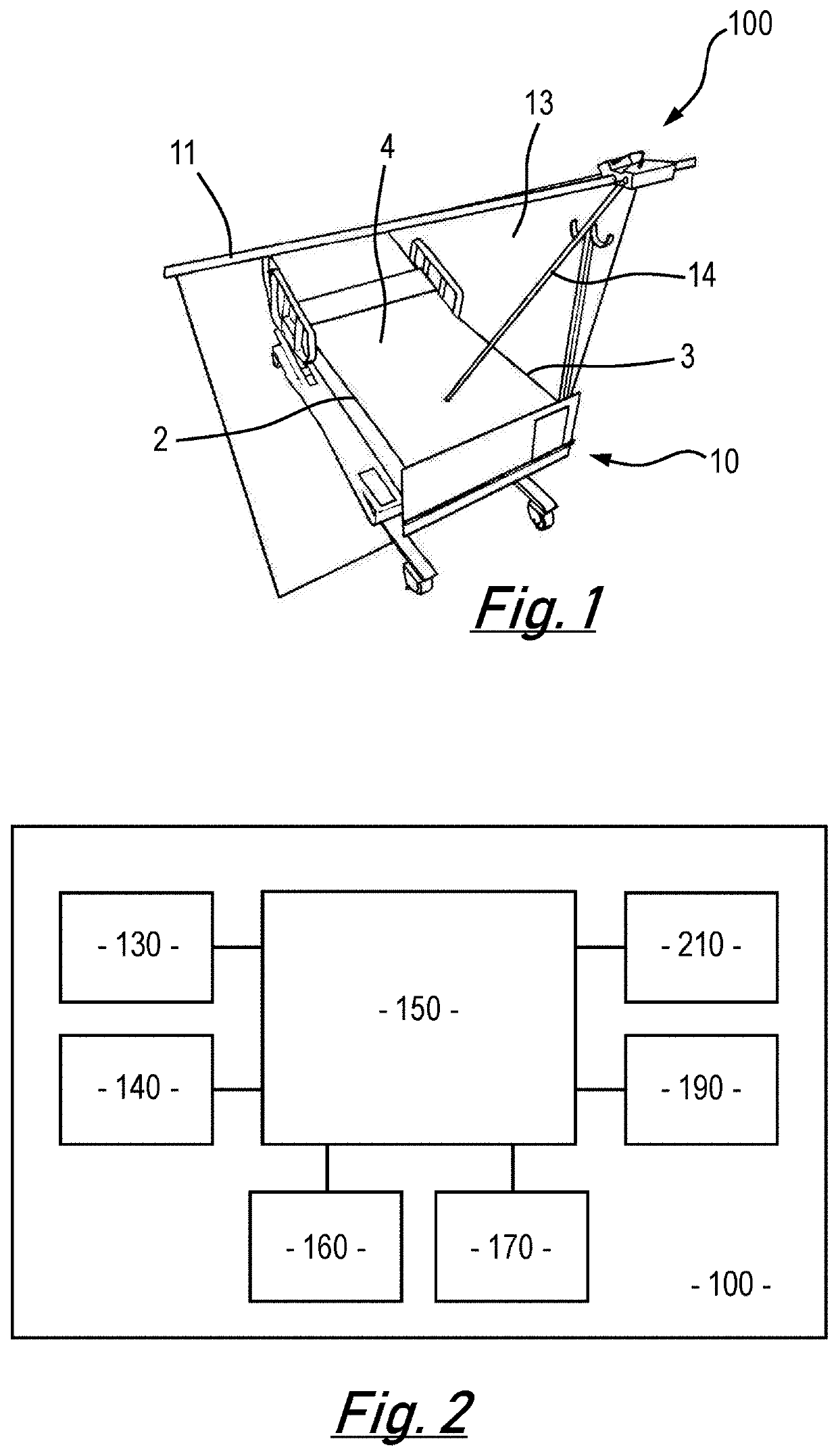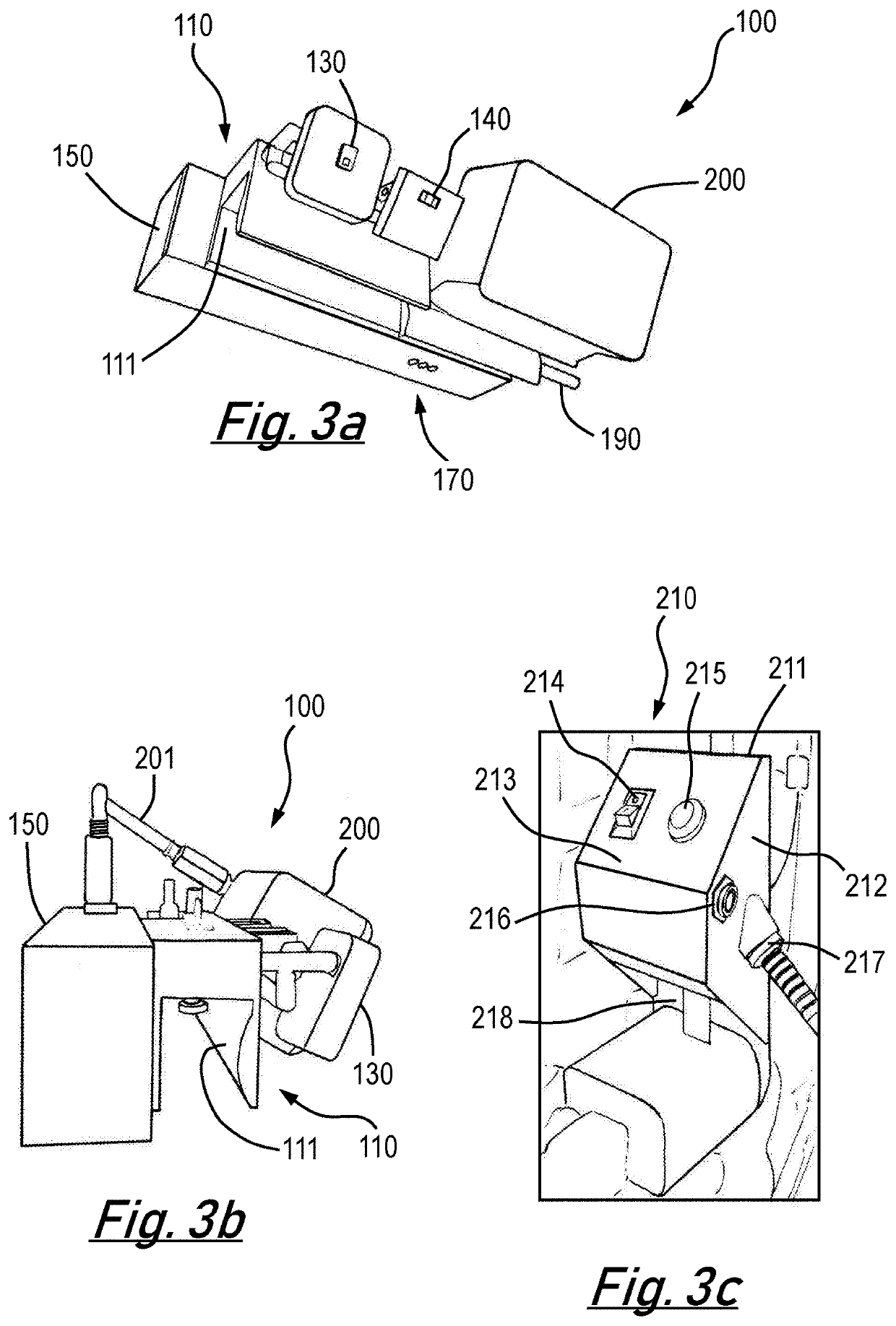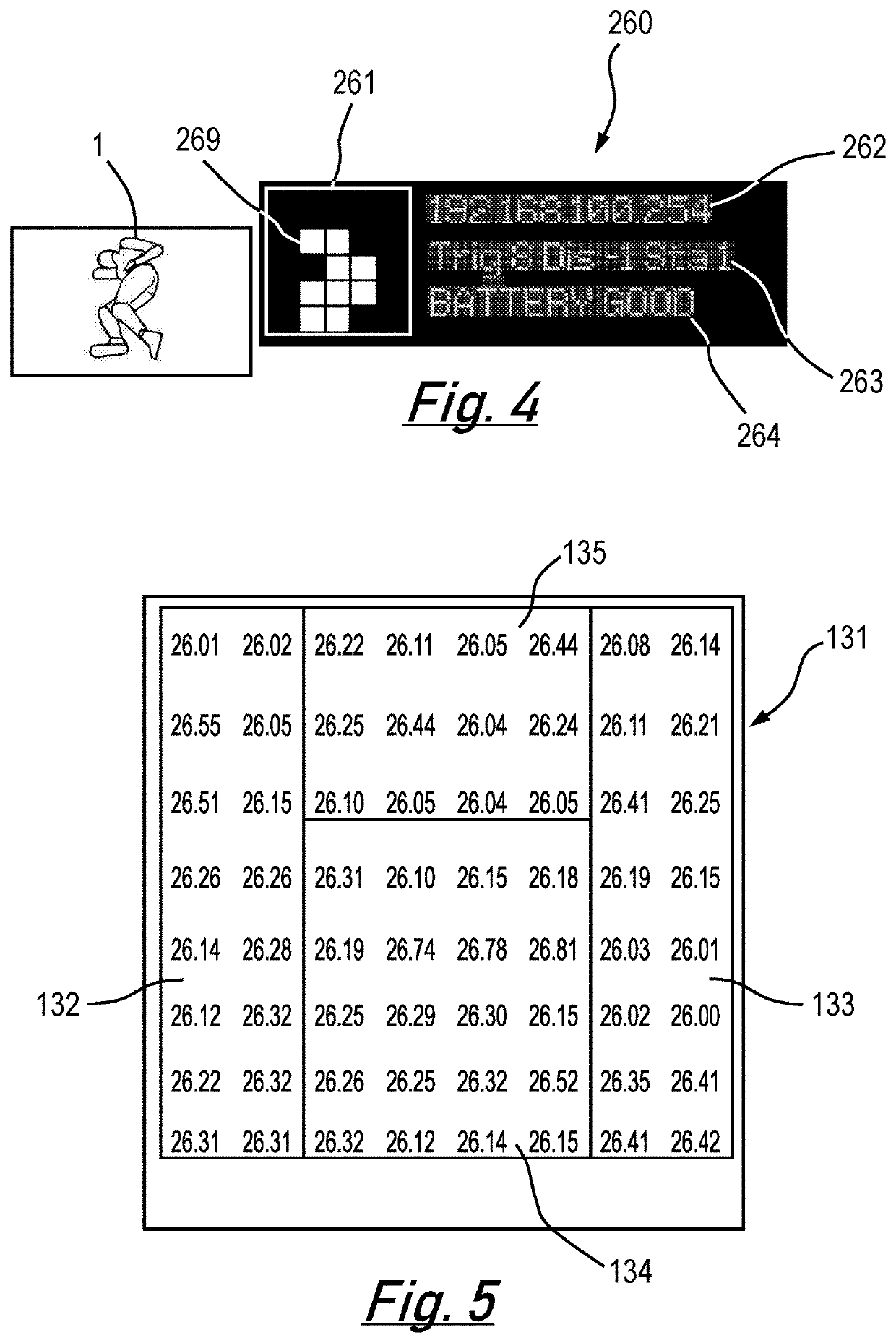Bed exit monitoring
- Summary
- Abstract
- Description
- Claims
- Application Information
AI Technical Summary
Benefits of technology
Problems solved by technology
Method used
Image
Examples
Embodiment Construction
[0058]In order that the invention may be more clearly understood one or more embodiments thereof will now be described, by way of example only, with reference to the accompanying drawings, of which:
[0059]FIG. 1 is a schematic illustration of a bed exit detection device fitted to a bed;
[0060]FIG. 2 is a schematic block diagram of the bed exit detection device of FIG. 1;
[0061]FIG. 3 shows (a) a front and side perspective view of the bed exit detection device of FIG. 1, (b) a side view of the bed exit detection device of FIG. 1; and (c) a perspective view of a user interface unit of the bed exit detection device of FIG. 1;
[0062]FIG. 4 is schematic illustration of the output of a display unit of a bed exit monitoring device;
[0063]FIG. 5 is a schematic illustration of different detection zones of an output value matrix of thermographic sensor for a bed exit detection device;
[0064]FIG. 6 is a schematic illustration of processed output value matrices so as to indicate both occupied and uno...
PUM
 Login to View More
Login to View More Abstract
Description
Claims
Application Information
 Login to View More
Login to View More - R&D
- Intellectual Property
- Life Sciences
- Materials
- Tech Scout
- Unparalleled Data Quality
- Higher Quality Content
- 60% Fewer Hallucinations
Browse by: Latest US Patents, China's latest patents, Technical Efficacy Thesaurus, Application Domain, Technology Topic, Popular Technical Reports.
© 2025 PatSnap. All rights reserved.Legal|Privacy policy|Modern Slavery Act Transparency Statement|Sitemap|About US| Contact US: help@patsnap.com



